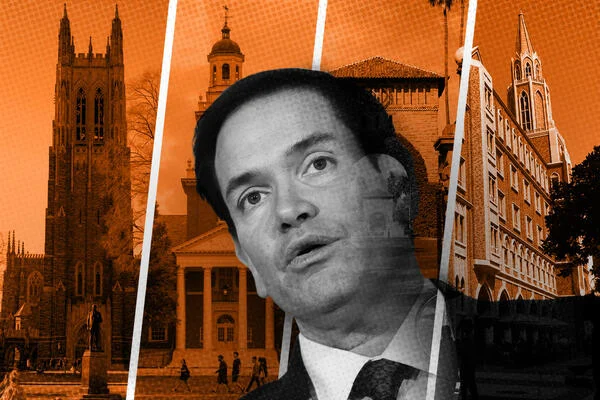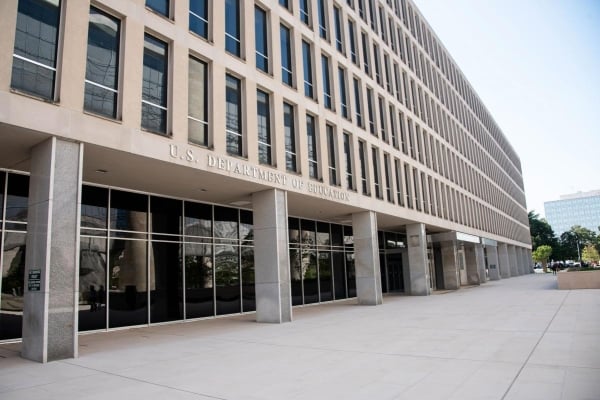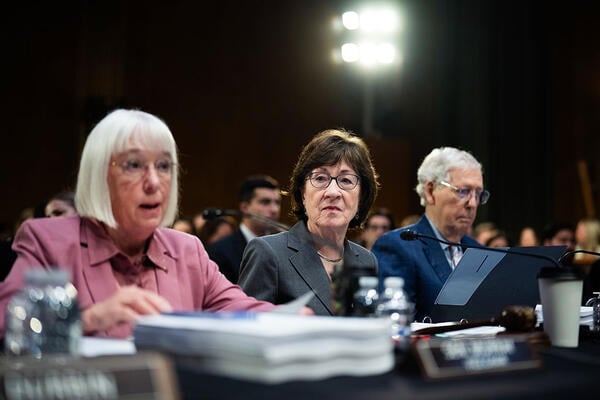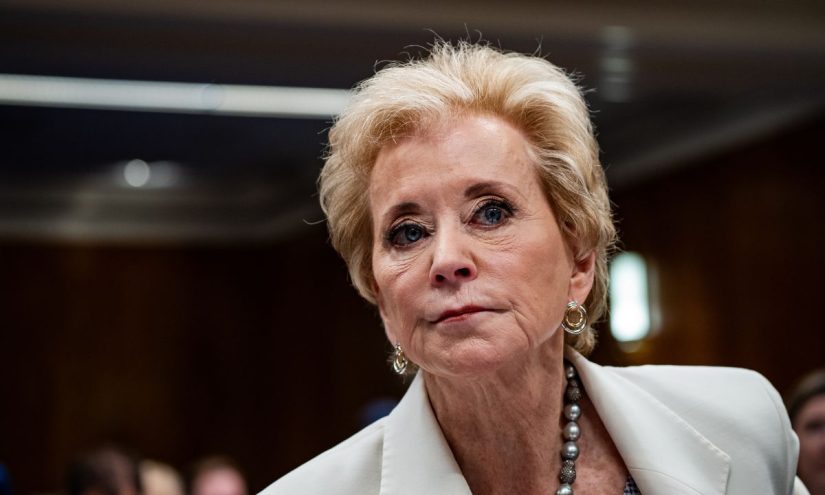State is planning to oust 38 universities from a partnership, The Guardian reported.
Drew Angerer/AFP/Getty Images | Lance King, Mario Tama and Justin Sullivan/Getty Images | Liz Albro Photography/iStock/Getty Images
The State Department’s Diplomacy Lab program says it enables students to work on real policy issues, benefitting both their careers and American foreign policy through their research and perspectives. It’s meant to “broaden the State Department’s research base in response to a proliferation of complex global challenges,” according to the program website.
But now the Trump administration’s domestic policy fight against diversity, equity and inclusion could upend this partnership between the State Department and universities. The Guardian reported last week that the department is planning to suspend 38 institutions from the program, effective Jan. 1, because they had what the department dubbed a “clear DEI hiring policy.” It’s unclear how the department defines that phrase or how it determined these institutions have such policies.
On Tuesday, The Guardian—citing what it called an unfinalized “internal memo and spreadsheet”—published the list of institutions that State Department plans to kick out, keep in or add to the program. A State Department spokesperson didn’t confirm or deny the list to Inside Higher Ed or provide an interview, but sent an email reiterating the administration’s anti-DEI stance.
“The Trump Administration is very clear about its stance on DEI,” the unnamed spokesperson wrote. “The State Department is reviewing all programs to ensure that they are in line with the President’s agenda.”
The institutions to be ousted, per The Guardian’s list, range from selective institutions such as Northeastern, Stanford and Yale universities to relatively small institutions including Colorado College, Gettysburg College and Monmouth University. The 10 universities to be added include Gallaudet University, which specializes in educating deaf and hard-of-hearing students, Liberty University, a conservative Christian institution, and the St. Louis and Kansas City campuses of the University of Missouri system. In all, the list shows plans for 76 institutions.
The shakeup appears to be yet another consequence of the Trump administration’s now nearly year-long campaign to pressure universities to end alleged affirmative action programs or policies. The day after his inauguration, Trump signed an executive order mandating an end to “illegal DEI” and calling for restoring “merit-based opportunity.” But Trump’s order didn’t define DEI.
Through cutting off federal research funding and other blunt means, the administration has tried to push universities to end alleged DEI practices. A few have settled with the administration to restore funding; Columbia University agreed this summer to pay a $221 million fine and to not, among other things, “promote unlawful DEI goals” or “promote unlawful efforts to achieve race-based outcomes, quotas, diversity targets, or similar efforts.” Columbia is among the institutions that the State Department intends to keep in the program, according to The Guardian’s list.
Inside Higher Ed reached out Tuesday to the institutions listed to be ousted. Those who responded suggested the program didn’t provide much, or any, funding, and said they didn’t engage in any illegal hiring practices.
The University of Southern California said in a statement that it “appreciated travel funding provided by the Diplomacy Lab program to two USC students in 2017 and looks forward to future opportunities to collaborate.” The university said that was the last time it received funding, and said it “complies with all applicable federal nondiscrimination laws and does not engage in any unlawful DEI hiring practices.”
Oakland University political science department chair and Diplomacy Lab campus coordinator Peter F. Trumbore said through a spokesperson that he hasn’t received notice of a change in status as a partner institution. He also said his university received no funding from the State Department for the program, though “our students have had invaluable experiences conducting research on behalf of State, and working with State Department stakeholders in producing and presenting their work.”
Georgia Institute of Technology spokesperson Blair Meeks said his university also never received funding from the State Department for the program. He also said “Georgia Tech does not discriminate in any of its functions including admissions, educational, and employment programs. We have taken extensive actions over time to eliminate any programs, positions, or activities that could be perceived as DEI in nature.”
Meeks further wrote that the State Department “communicated that cuts or halts to the program were associated with the federal government shutdown” that ended earlier this month. Sarah Voigt, a spokesperson for St. Catherine University, said in an email that the State Department told her university back on Jan. 31 that it was pausing Diplomacy Lab activities, so the institution didn’t apply for research opportunities this semester. Then, last week, the State Department told the university that “‘due to the delays caused by the shutdown,’ they were again pausing Diplomacy Lab activities.”
“Our understanding is that the program was shut down due to a lack of government funding,” she wrote.
“The University had been participating as a Diplomacy Lab Partner Institution since early 2020, and we appreciated the opportunities to offer our students and faculty members very timely research topics through this program,” she added. “If the Department of State were to resume Diplomacy Lab activities, we would review what opportunities were available.”










